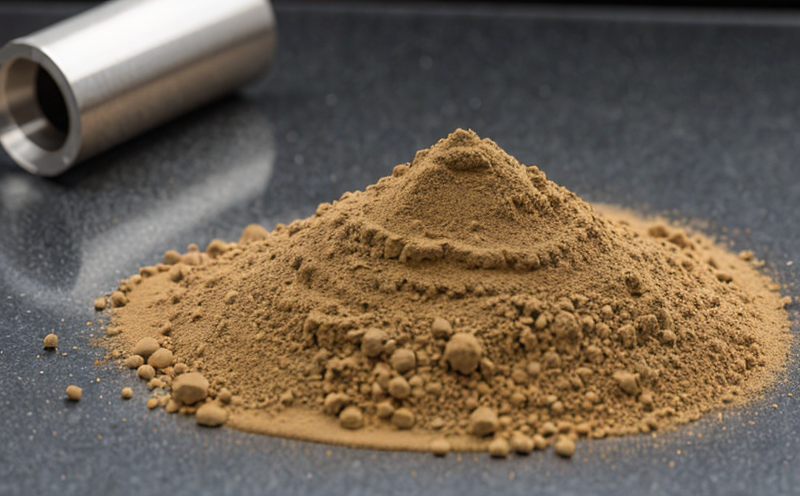ISO 11334 Oxidation Stability Testing
The ISO 11334 standard is a crucial tool in assessing the oxidative stability of polymers used in additive manufacturing (AM) and 3D printing. This test evaluates how well raw materials withstand oxidation under specific conditions, which is critical for ensuring the longevity and performance of parts produced through AM processes. Oxidative degradation can lead to reduced mechanical properties, accelerated aging, and potential failure of components, especially those exposed to environmental elements or high-stress applications.
The testing procedure outlined in ISO 11334 involves exposing samples to controlled atmospheres that simulate real-world conditions where oxidation might occur. This includes exposure to oxygen, heat, and sometimes moisture. The specimens are then analyzed for changes in weight, color, and other physical properties over time. By measuring these parameters, the test provides insights into the material's resistance to oxidative breakdown.
Understanding the oxidative stability of raw materials is essential for quality assurance in AM processes. It helps manufacturers select suitable polymers that can withstand the rigorous demands of 3D printing. This knowledge ensures that end products meet the necessary performance criteria and have a longer shelf life, which is particularly important for industries like aerospace, automotive, and medical devices.
The ISO 11334 test protocol is versatile enough to accommodate various polymer types used in AM, including thermoplastics, thermosets, and elastomers. This flexibility allows it to serve as a comprehensive tool for material evaluation across different sectors. For instance, in the aerospace industry, where components must endure extreme environmental conditions, knowing the oxidative stability of raw materials is paramount.
Furthermore, this testing method supports research and development (R&D) efforts by providing data that can be used to optimize formulations and improve polymer performance. It also aids procurement teams in selecting reliable suppliers who provide stable and consistent quality materials.
The ISO 11334 test is not just a compliance requirement; it's an integral part of the design and development process for durable, high-performance parts. By incorporating this testing into their workflows, companies can ensure that they are meeting industry standards while also innovating to meet evolving market demands.
Scope and Methodology
The scope of ISO 11334 Oxidation Stability Testing is broad enough to cover a wide range of polymers used in additive manufacturing. The method involves exposing specimens to controlled atmospheres that mimic real-world conditions where oxidation might occur, such as high temperatures and humidity levels.
- Atmosphere Control: Specimens are exposed to oxygen-rich environments to simulate the presence of free radicals that can initiate oxidative reactions.
- Thermal Cycling: Samples undergo temperature variations to assess their stability under fluctuating environmental conditions.
- Weighing and Spectroscopy: Changes in weight and spectral shifts are measured over time to monitor any signs of degradation.
The testing protocol ensures that the results are accurate and reproducible, providing valuable data for quality assurance and process optimization. This method is particularly useful in identifying potential issues early on, allowing for corrective actions to be taken before they affect product performance.
For additive manufacturing applications, this test helps ensure that raw materials can withstand the high temperatures involved in 3D printing processes without degrading significantly. The results from ISO 11334 testing can guide material selection and process optimization, ensuring the production of durable parts with consistent quality.
Benefits
- Enhanced Durability: Ensures that parts produced through AM processes have a longer lifespan by selecting raw materials with superior oxidative stability.
- Improved Quality Assurance: Provides critical data for quality control teams to monitor material performance and ensure consistency.
- Informed Decision-Making: Allows R&D engineers to optimize formulations and improve polymer performance based on real-world testing results.
- Mitigated Risks: Identifies potential issues early, reducing the risk of costly failures in end products.
- Compliance Assurance: Helps companies meet industry standards and regulatory requirements for material stability.
- Innovation Support: Facilitates ongoing improvements in additive manufacturing processes by providing reliable data on material performance.
The ISO 11334 test offers a comprehensive approach to evaluating the oxidative stability of raw materials, making it an indispensable tool for quality managers and compliance officers. Its benefits extend beyond mere compliance to encompass enhanced product performance, reliability, and innovation in additive manufacturing applications.
Quality and Reliability Assurance
The ISO 11334 Oxidation Stability Testing plays a vital role in maintaining high standards of quality and reliability assurance across the entire supply chain. By ensuring that raw materials used in AM processes have excellent oxidative stability, manufacturers can significantly reduce the risk of product failures due to premature aging or degradation.
For compliance officers, this testing method provides essential data for auditing and certification purposes. It helps ensure that all products meet the necessary performance criteria set by industry standards and regulations. This is particularly important in sectors like aerospace, automotive, and medical devices, where material stability directly impacts product safety and reliability.
R&D engineers also benefit from ISO 11334 testing as it offers valuable insights into material behavior under various conditions. These data points can be used to refine formulations and improve the overall performance of parts produced through AM processes. By leveraging this information, companies can innovate more effectively, leading to better-performing products.
Procurement teams find ISO 11334 testing beneficial as it allows them to select suppliers who provide stable and consistent quality materials. This ensures that every batch of raw material meets the required standards, thereby maintaining a high level of product reliability throughout production.
In summary, ISO 11334 Oxidation Stability Testing is an essential component in ensuring the quality and reliability of products produced through additive manufacturing processes. By incorporating this testing into their workflows, companies can enhance their competitive edge by delivering superior, long-lasting parts that meet stringent performance criteria.





